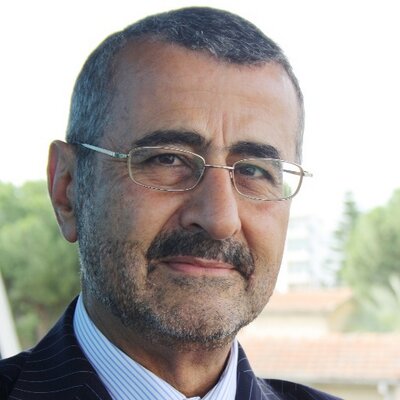COP30 has started at Belem in Brazil, but with low expectations. Not only under President Trump the US has pulled out of the Paris Agreement – starting January – but his administration is actively undermining the conference. In addition, attendance is low, possibly as a result of the remote location, with difficult accessibility.
But also likely as result of global developments during the past year that to a certain extent have taken some of the steam out of energy transition. There is a growing realisation that even though energy transition is progressing, it is doing so at a lower rate than originally envisaged, making it less and less likely that it will achieve its 2050 goals.
Global energy demand is still growing at 2 per cent, a faster rate than the 1.4 per cent average rate over the last 10 years, requiring all energy forms – including fossil fuels – to carry on growing to provide the energy the world needs. This is driven by the energy demands of AI and data centres, increasing needs for heating and cooling, population and standard of living growth. The world appears to be in an ‘energy addition’ mode rather than energy substitution.
Global divisions over the future of fossil fuels were evident at a diminished leaders’ summit on the eve COP30 summit in Brazil – attended by about 30 world leaders, half the number at COP29, but excluding US, China and India. Leaders of fossil fuel producing countries were notable by their absence. UN Secretary-General Antonio Guterres ‘tore’ into nations for their failure to limit global warming to 1.5 degrees Celsius.
Even UK’s Keir Starmer, a staunch supporter of climate action, acknowledged that the international consensus – that led to the Paris Agreement – is no longer there. “Today, sadly, that consensus is gone, with some arguing that this isn’t the time to act and saying that tackling climate change can wait.”
Since the commitment two years ago at COP28 to shift away from fossil fuels by 2050, global efforts have been ‘watered-down,’ driven by energy security concerns.
The numbers – and the mood – of top industry executives attending COP30 has diminished, thwarted both by its location, as well as political pressure on climate action by Trump and his administration. In industry and business there is now greater discussion of energy security and affordability, not sustainability alone.
The transition to a decarbonised global economy is behind schedule and possibly losing momentum. It is not that it will not happen – but it is unlikely that it will happen by 2050.
Ten years after Paris, countries were expected to submit their next generation of Nationally Determined Contributions (NDCs) covering the 2025-2035 period and representing their most ambitious climate pledges yet. These “must demonstrate significant progression and align with the 1.5°C temperature goal.” However, even though submitted NDCs offer an improvement, this is well below what is needed. Guterres warned that “overshooting 1.5°C is now inevitable.”
COP30 initiatives
One of the key initiatives being taken at COP30 are measures, including financing, to conserve and restore tropical forests. About 6.7 million hectares of “primary tropical forest were lost” in 2024 alone, up 80 per cent from 2023, largely due to fires and deforestation.
COP29 established a new ‘Finance Goal’ of delivering at least $300 billion annually for developing countries by 2035. COP30 wants to help these countries “secure more funding for climate mitigation and resilience efforts.”
The new ‘collective quantified goal (NCQG), established at COP29, calls on countries to mobilize $1.3 trillion in international climate finance by 2035. Another $310 billion is needed annually to adapt to climate impacts – rising sea levels, heat extremes and intensifying storms.
COP30 must produce breakthrough commitments detailing how funding gaps can be secured through public, private, philanthropic and multilateral development bank sources.
For these reasons, COP30 has been framed as the ‘Implementation COP’, where negotiated commitments will finally translate into tangible action. This will determine whether the next decade delivers “the transformational change that climate science demands.”
What’s to come
There is serious concern that not only the US has not sent any high-level officials to participate at COP30, but also that it may seek to disrupt negotiations at the event, as it did at the recent IMO negotiations that ended in failure.
This is providing a test of whether other world leaders will be willing to step up their efforts to limit climate change, despite the US position. But there is concern that some countries already feel intimidated.
In the absence of the US, China is quickly filling the gap, increasing its influence. It is determined to ensure that energy transition continues unabated, because “its industries dominate global manufacturing of key low-carbon technologies, from solar panels to batteries.” At the opening of COP30, it committed to accelerate a comprehensive green transition in its economic and social development.
China’s foreign ministry said “no one can afford to be left behind in tackling climate change, no nation can shirk its responsibilities…The international community must stay the course.”
AI is making its debut at COP30, with the launch of an important initiative, the AI Climate Academy, to enable developing countries to build their capacity to ensure wider access to AI-led climate solutions. COP30 is “setting the stage for harnessing AI’s transformative force for climate action,” including adaptation.
COP30 is expected to finalise the Global Goal on Adaptation (GGA), crucial for enhancing adaptive capacity, strengthening resilience and directing resources to vulnerable countries.
One change already becoming evident, is that COP30 is expected to focus more on converting the Paris Agreement’s commitment to limit global warming to well below 2°C, in effect abandoning the 1.5°C goal.
The topic that will predominate discussions is climate finance. The success, or otherwise, of COP30 will be judged on the ability to deliver credible finance packages to back achievement of climate goals.







Click here to change your cookie preferences